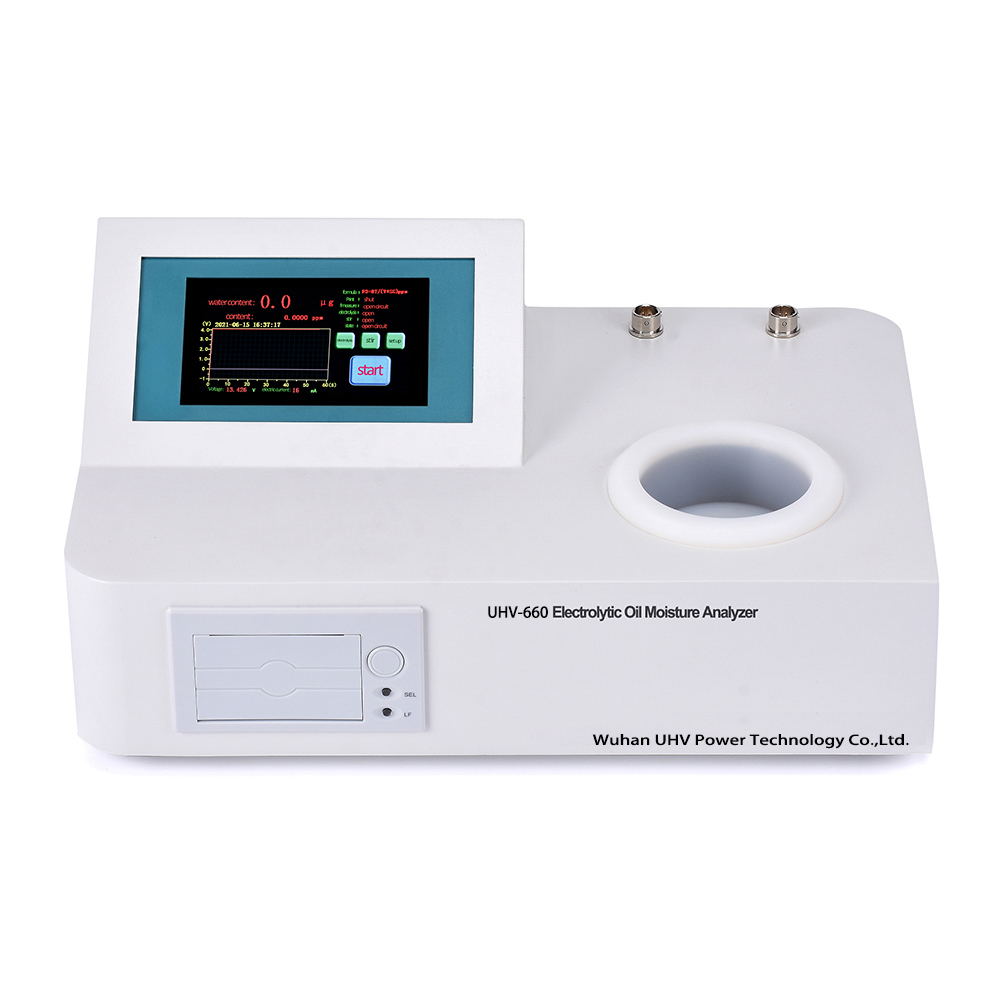The trace moisture analyzer under UHV power can help many power workers conduct various power tests more conveniently.

The Karl Fischer moisture analyzer is suitable for determining the moisture content in various organic and inorganic substances. What aspects should be paid attention to when using?
1、 Testing of organic and inorganic compounds
The Karl Fischer method is suitable for determining the water content in many inorganic and organic compounds.
Due to the difference in properties of compounds, they can be divided into two categories: those that can be directly measured and those that cannot. Therefore, it is requested that analysts first consider which category a certain compound belongs to when determining its water content. If it is the latter and direct determination is chosen, significant measurement errors will occur or the basis cannot be determined.
If water in compounds that cannot be directly measured is to be measured, appropriate methods must be used to eliminate various interfering factors and achieve accurate measurement.
2、 Sampling and Sampling Quantity
When conducting analytical sampling, representative samples should be taken as much as possible after mixing evenly, and the presence of free moisture at the bottom of the container should be observed. When using a syringe to extract a sample, the extraction speed should not be too fast, otherwise air may enter the syringe and form bubbles, resulting in injection errors. If a milky appearance is found between the sample and the container before analysis, or if small water droplets precipitate on the bottle wall, the ethylene glycol extraction method must be used for analysis. The specific method is as follows: add one-third of the sample to a pre dried fine mouthed bottle, cover it tightly, weigh it accurately to 0.1 grams on an industrial analytical balance, then weigh 2 to 3 times the amount of ethylene glycol and shake vigorously for 15 minutes. After static layering, use a syringe to draw 0.25-1.0 mL of ethylene glycol through the sample layer, measure its water content, and also measure the original water content of ethylene glycol. After analysis, pour out the sample from the bottle, wash and dry it, and weigh it accurately to 0.1 grams on a balance. Based on the difference between the three weighings mentioned above, calculate the amount of sample and ethylene glycol to determine the moisture content of the sample.
Before injection, the syringe should be cleaned 5-7 times with the analytical reagent, and then the sample size should be determined based on the water content of the sample. Generally, the sample size should be less than 0.1-5mL according to the rules in Table 3. Table 3 Sampling Quantity Refer to Data Sample Moisture Content (ppm) Sampling Quantity (mL) 0-102-510-1001-2100-10000.1-1 > 1000 < 0.1 From Table 3, it can be seen that substances with higher moisture content require smaller sampling quantities, while those with lower moisture content require larger sampling quantities, otherwise significant measurement errors will occur. Pay special attention to whether there are small bubbles in the syringe during injection to prevent serious measurement errors.
3、 Accuracy of measurement
The Karl Fischer titration method for determining the water content of substances has a wide range from a few ppm to 100%, and the requirement for accuracy is based on the determination of the moisture content. Generally, it is requested that the difference between two parallel measurements and the arithmetic mean should not exceed the following values: water content (ppm). The allowable difference is 1-10 ± 1ppm10-50 arithmetic mean ± 10%>50 arithmetic mean ± 5%. When conducting analysis, the arithmetic mean of the two measurements should be taken as the analysis result.



















